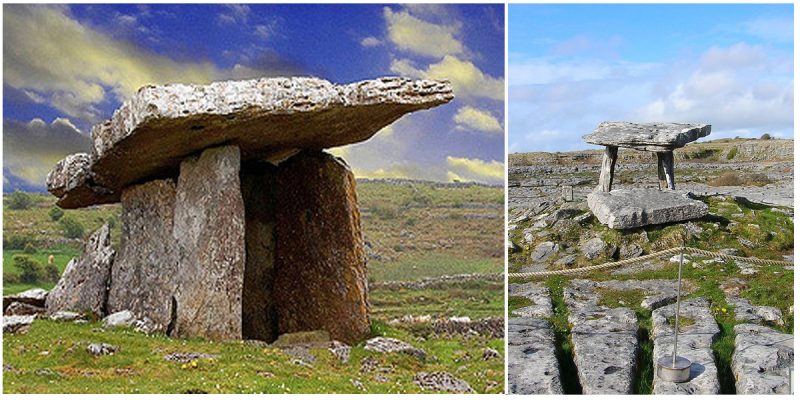Poulnabrone dolmen is a portal tomb, and one of the most famous and oldest Irish dolmens. Located in The Burren National Park in Co. Clare, Poulnabrone is the most photographed of Ireland’s 174 dolmen tombs because of its unusual sculptured form.
This iconic archaeological monument is the second-most visited location in the region after the Cliffs of Moher.
Poulnabrone dolmen means “hole of the quern stones” in Irish. The dolmen dates back to the Neolithic period, sometime between 4200 BC and 2900 BC. It has two large standing parallel portal stones, capped with a massive sloping capstone. The standing portal stones are 5 feet high and create a chamber below in a 29.5-foot low cairn.
The cairn helped to stabilize the tomb chamber and wouldn’t have been higher during the Neolithic period. The tomb is surrounded by a low mound made of rocks and built on a limestone pavement. There are 70 other similar tombs in the same area, including one at Gleninsheen.
The Poulnabrone dolmen was excavated for the first time in 1986 and again in 1988 by Ann Lynch. The team of archaeologists replaced one portal stone and excavated the chamber, the portico, and the cairn.
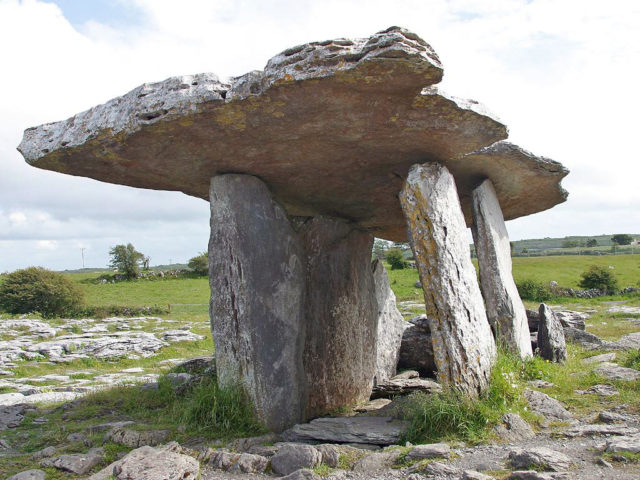
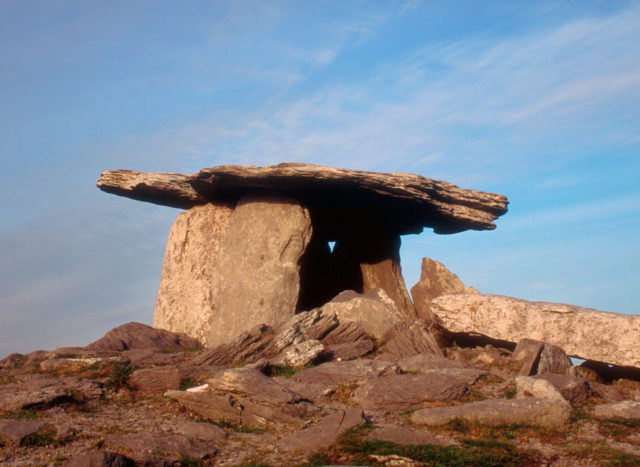
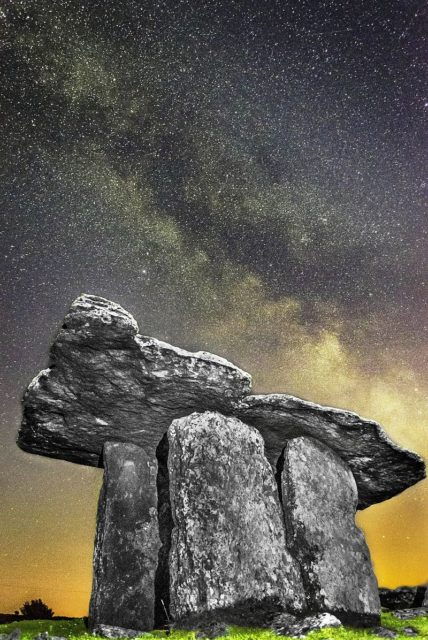
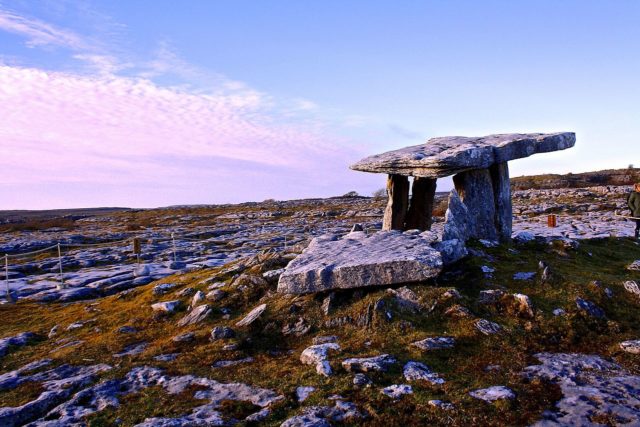
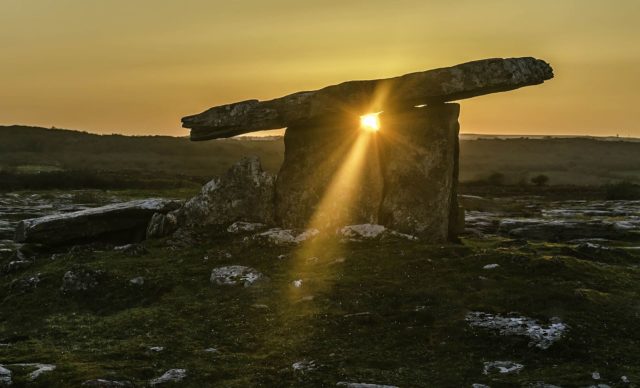
During the excavations, the remains of 22 people from the Neolithic Age were found. They were buried under the monument with personal items including quartz crystals, pottery, stone axes, and weapons. The pieces of clothing that were found with the remains show that hard physical work was normal for people from that period. There was also evidence of craftsmanship, which was shown in a neck pendant found on the site.
All of the skeletons have signs of injuries or illnesses, which indicates that the site was not typically used as a burial place. Only one of the adult skeletons shows evidence of arthritis, and it is believed that he lived past 40. Because it was not a general burial place, archaeologists believe that the remains belong to members of a supposed elite, who were buried in this well-protected location. Some of the skeletons feature scorch marks, which may signify that the bodies were ritually purified after their death.
Near the dolmen, there is a large boulder which is an example of a glacial erratic. Stones like this one can be found all over the Burren, many of which have been carried from east Clare and Galway.
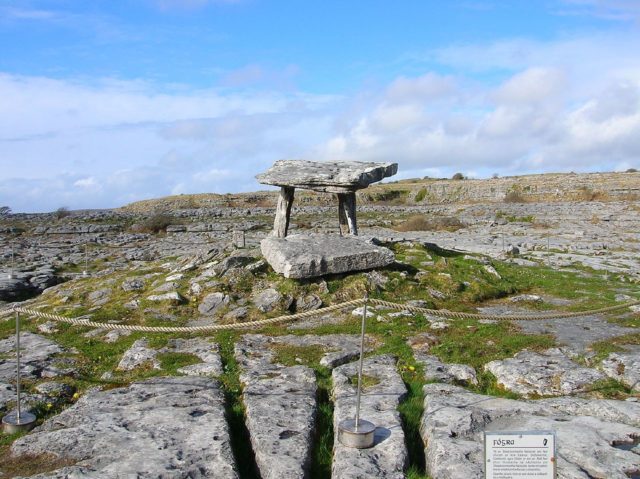
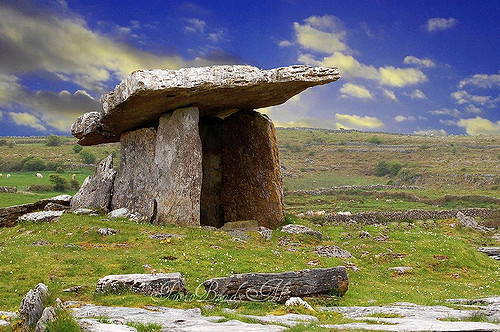
Some archaeologists suggest that the dolmen was a territory marker, erected by the inhabitants of large settlements to delimit the northern border near Kilnaboy. Others believe that in the Bronze Age, the tomb was probably a ritual place and location for ceremonies.
Today, the dolmen is a popular tourist attraction which is protected by a rope barrier. It is forbidden to touch the dolmen, and no one is allowed to cross the barrier. The findings excavated from the tomb were loaned from the National Museum of Ireland, and today they are housed at the Clare Museum in Ennis.
